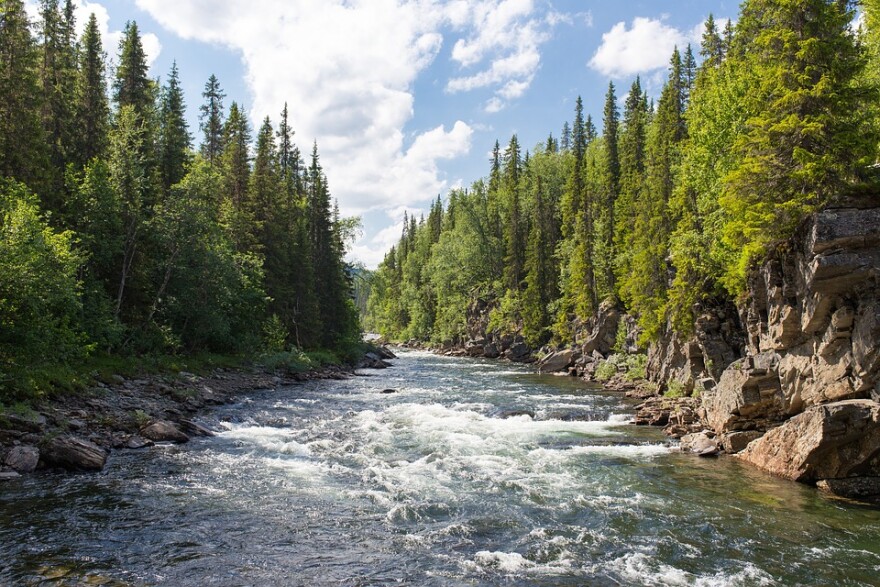“There isn’t a mathematical formula to describe how water moves here. It’s just impossible to predict,” he told me.
I was visiting Utah State University’s Water Research Lab and a grad student had just unleashed an impressive torrent of water into a 4-foot-square, 20-foot long, hollow plexiglass column for my viewing pleasure. He was trying to demonstrate for me the physics of the Venturi Effect.
The Venturi Effect in hydrology is the reduction of water pressure after water is forced through a constriction. There’s a formula for it. Likewise, there is a formula for the increase in water’s velocity upon entering said constriction according to the principle of mass continuity—which basically states that, because water is incompressible, it inevitably moves faster as it’s continually forced through tight spaces.
I understood all that, but I was more interested in the frothy madness happening in the middle of the column—the wild torrent threatening the bolts and seals of the plexiglass; the phenomenon, I was told, for which there is no formula, no predictability.
There were three of us in the boat, friends who had met guiding rivers back east nearly a decade before. We had brought an 11-foot bucket-raft against one of the gnarlier western rivers at high spring runoff—a dinghy taking on a white whale. You can always hear the whitewater before you finally see it, especially the big rapids. We had come upon it faster than anticipated.
Limestone outcroppings constricted the river into a bottleneck here where it makes a dog-leg to the left; and, at 20,000 cubic-feet-per-second, the river curls back onto itself at the crest of a frothing wave. There is no formula for it; no predictability. “What do I do?” the one in back steering shouted at me. “I don’t know!” I shouted back. We tilted down into the trough of the wave.
A river is never the same twice. Fluvial geomorphology says so. Fluvial geomorphology is the study of the ways in which a river moves, changes, and interacts with its channel and the landscape around it. People who study this sort of thing talk about the character of a river and how it changes with the smallest variability. A misplaced cobble of the riverbed causes a riffle where there once wasn’t one previously; an eddy develops, changes directional flow; the river is never the same again.
I have always been fascinated by this. The fluid mechanics at work in a river must be respected and understood, even if they can’t always be predicted.
We rode the wave to its frothy crest where we were thrown like rag dolls, luckily, to the center of the boat rather than overboard. At the apex of the wave, we were stuck like glue to the water as it boiled in all directions—inward, outward, upstream, and back down. “Paddle hard!” one of us shouted as we scrambled back into position, jamming our paddles into the teeth of the wave. We spun this way and that and almost back down the wave before the river released us. We shouted in triumph for the sheer thrill of experience, and because we had all managed to stay in the boat. Something I wouldn’t have predicted.
If you could freeze time and analyze the cross-sections of a whitewater wave, you might come up with a formula to explain water’s frozen movements; but the formula would never be the same twice. The river says so.







